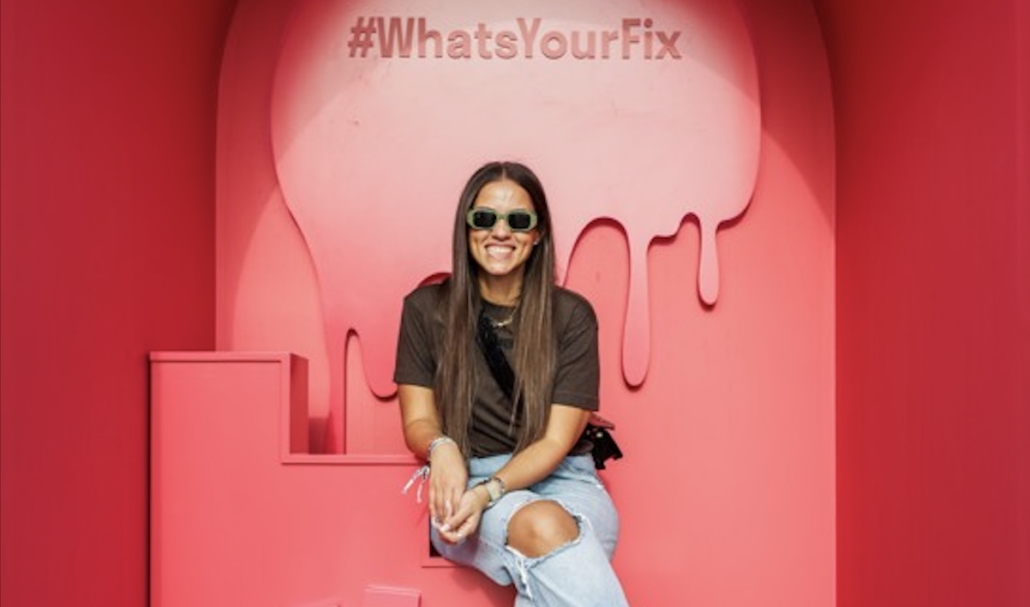
In a world of food trends, few have captured global attention quite like Dubai chocolate, a rich, artisanal chocolate bar infused with traditional Middle Eastern flavours that quickly became a viral sensation. Beyond its irresistible taste and visual appeal, Dubai chocolate shows how food can become a powerful diplomatic tool, promoting a destination’s image worldwide through a simple act of sharing flavours.
The birth of a viral phenomenon
Dubai chocolate originated in 2021 when Sarah Hamouda, a British-Egyptian engineer living in Dubai, sought to satisfy her pregnancy cravings with a novel twist on beloved Middle Eastern desserts. She partnered with Filipino pastry chef Nouel Catis Omamalin to blend milk chocolate with Middle Eastern staples: pistachio, tahini paste, and kataifi (the shredded phyllo dough that gives knafeh its signature crunch). The resulting chocolate bar, which they named “Can’t Get Knafeh of It”, evokes the taste and nostalgic warmth of knafeh, paired with the luxurious texture of chocolate.

What started as a local artisanal treat quickly spiralled into a global viral craze starting in late 2023 when TikTok videos spread across social media platforms showcasing the chocolate’s satisfying snap and green gooey and crunchy filling of pistachios and kataifi. The hashtag #dubaichocolate exploded in popularity with millions of views, creating a frenzy that almost overnight transformed an artisanal bar into an international food icon.
The ripple effect beyond the original bar
Dubai chocolate’s virality exemplifies the unique power of modern social media to drive consumer behaviour, amplify cultural products, and create new food market dynamics. It also symbolises Dubai’s position as a vibrant, innovative city blending cultural heritage with modern trends, appealing especially to young, cosmopolitan consumers.
Culinary diplomacy and food as soft power
Dubai chocolate is more than just a tasty treat; it is a shining example of culinary diplomacy. By sharing a unique gastronomic experience rooted in local traditions, Dubai and the United Arab Emirates project a positive, appealing image globally. The chocolate bar serves as a cultural ambassador, facilitating cross-cultural connections through the simple but profound act of tasting.
Often described as a form of soft power, culinary diplomacy uses food culture to promote mutual understanding, build goodwill, and enhance a country’s or city’s image internationally. It offers a softer, more accessible means of diplomacy than traditional political channels, often reaching people more personally and emotionally.
Global examples of culinary diplomacy
The concept of food as a diplomatic tool is well established worldwide. Various cuisines and iconic food items have fueled national identity and diplomatic efforts, often bridging cultural gaps and encouraging tourism.
The historic spice trade is a significant example of what can now be interpreted as proto-culinary diplomacy. For centuries, the movement and sharing of spices across Asia, Africa, the Middle East, and Europe fueled economic development and global exploration and established deep-rooted cultural exchanges. Spices such as cinnamon, pepper, ginger, nutmeg, and cloves became ambassadors of their places of origin. They transformed cooking traditions in distant lands, often creating a sense of fascination and admiration for faraway cultures.
As kingdoms and trade empires vied for control of spice routes, their products forged connections between regions, introduced new tastes, and helped shape early ideas about luxury, cosmopolitanism, and sophistication. The pursuit of spices led to historic trading relationships, sometimes conflict, and the blending of culinary practices. In modern terms, these interactions share common ground with culinary diplomacy, which uses food culture to build bridges, foster dialogue, and promote the image of countries in a soft, influential way.
Like spices in previous centuries and Dubai chocolate nowadays, many other culinary items have played similar diplomatic roles worldwide. Legendary dishes and food products like Danish pastries and French cuisine have long been associated with sophistication and cultural refinement, attracting visitors and elevating national prestige. Sushi has popularised Japanese culture worldwide, fostering interest far beyond culinary tastes and promoting a respect for Japanese traditions. Mexican cuisine notably plays a unique diplomatic role, softening American public attitudes towards Mexico amid constant political tensions. It emphasises shared cultural ties and appreciation. Renowned global culinary ambassadors such as Italian staples like pizza and pasta have become global ambassadors of Italian culture, symbolising family, tradition, and lifestyle. Other emblematic foods, such as Argentinian beef and New Zealand’s kiwi fruit, likewise enhance international recognition and positive perceptions of their countries.
These examples show how culinary traditions can be powerful agents for building cross-cultural bridges and boosting international relations in a subtle yet impactful fashion.
Dubai chocolate’s role in promoting Dubai’s global appeal
More than just a viral treat, the Dubai chocolate perfectly captures the city’s modern identity: a blend of cultural heritage, bold innovation, and undeniable luxury. For years, Dubai’s global image was built on gleaming skyscrapers and lavish shopping. This chocolate bar has helped build a new narrative. It offers a taste of authenticity and creative fusion, shifting the city’s brand from simply a hub for business and tourism to a crucible of cultural cool.
This shift is cultural diplomacy at its most potent. As millions worldwide discover and imitate the chocolate, they unknowingly become part of an informal exchange that promotes openness, curiosity, and economic opportunity.
So, forget traditional ambassadors. The most effective diplomat for Dubai right now might be a chocolate bar. Fueled by an endless scroll of social media videos capturing its signature, satisfying crunch, it became more than a trend; it became an experience. The irresistible combination of smooth milk chocolate, rich pistachio cream, and crispy toasted kataifi pastry created a texture people didn’t just want to taste but felt compelled to share.
Its incredible journey from a personal craving to a global “must-have” shows how a single, delicious moment can build cultural bridges, generate a massive economic buzz with tourists flocking to find it, and instantly upgrade a city’s identity.
Forget soft power. This is delicious power.
Click to show page navigation!



